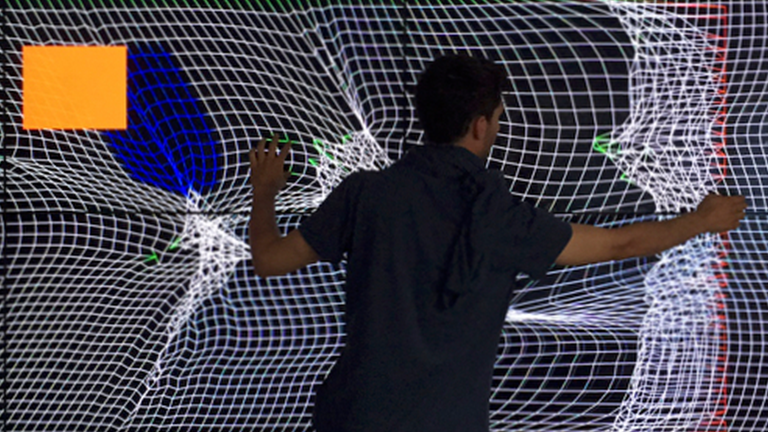The two major challenges of this area are processing multimodal information that allows the machine to take full advantage of the multiple information sources and computing capabilities, and designing effective, expressive and scalable interactions and devices for environments with a multiplicity of data, artifacts and humans.
There are a wide range of applications in both the physical world (robotics, human-computer interaction, digital manufacturing etc.) and the virtual world (virtual reality, augmented reality, visualization, chatbots etc.)
Key figures
Research
The school leads two joint research initiatives with companies.
AllegoRI: 3D sciences and technologies and computer graphics
The objective of this joint laboratory is to initiate a joint research project on 3D sciences and technologies between Télécom Paris’ computer graphics team and the Allegorithmic firm. This project aims to improve 3D content creation methods, which play a major role in the creative industry and in emerging media, such as video games, virtual reality, digital manufacturing and the 3D web.
Exalt Design Lab: promoting design in companies
Strate School of Design, Télécom Paris and École polytechnique, with the support of Carrefour, OTIS, MAIF, InProcess and EMAKINA, have created the EXALT Design Lab, the first joint research laboratory dedicated to promoting design in companies. The EXALT Design Lab research project is devoted to working on solutions for making design a central part of strategic planning, in an effort to anticipate and respond more effectively to the complexity of markets and to a changing society.
Engineering training
The 3D and Interactive Systems study track of Télécom Paris’ engineering cycle aims to provide comprehensive training in the fields of human-computer interaction (HCI) and 3D computer graphics. It prepares future engineers to design advanced interactive systems by providing them with the computer science and mathematical skills they need to model these systems digitally.
In addition to scientific careers related to research in HCI or in 3D computer graphics, this study track prepares students for careers in computer-aided design (CAD), video games, special effects, mobile applications, simulation, interaction design, virtual reality and visualization.
Télécom Paris participates in three Master’s programs offered by universities in the area of “Design, Interaction and Perception”:
Programs with Université Pierre and Marie Curie
M2 IMA: Image, computer vision, computer graphicss; specialization of the “Computer Science” major
Programs with Université Paris-Saclay:
- M2 HCI: Interaction, Human Computer Interaction; specialization of the “Computer Science” major
- M2 VMA: Mathematics, Vision and Learning; specialization of the “Mathematics and Applications” major
Executive education
Télécom Paris Executive Education offers a number of inter-company training courses in the fields of virtual reality, augmented reality and 3D imaging, through its Audiovisual and Multimedia Department.
Innovation
Digiscope Platform
The Digiscope Equipex (equipment of excellence) is a network of platforms designed for interactive visualization of large datasets and complex computation with applications in scientific research, industrial design, decision support and training. The ten Digiscope rooms are interconnected via a telepresence network that supports remote collaboration. Télécom ParisTech houses PIXLS, a large wall-size display with multi-touch capabilities and a motion tracking system for freehand gestural interaction.

Open-source software
In modeling 3D environment and objects, Télécom Paris researchers have developed highly appreciated open-source solutions. Here are a few examples.
SQEM – Spherical Quadric Error Metrics
This application is based on a new simplification algorithm for 3D forms. With this new approach to approximation in modeling, extremely-simplified 3D objects are generated through the interpolation of spheres, instead of the interpolation of points on the mesh of a traditional surface.
VREng – Virtual Reality Engine
VREng is an interactive and distributed 3D engine that enables navigation in virtual environments connected through the internet using or multicast. VREng is distributed under a GPL open-source license.
Contact
- Scientific CommunicationTélécom Parisemailemail